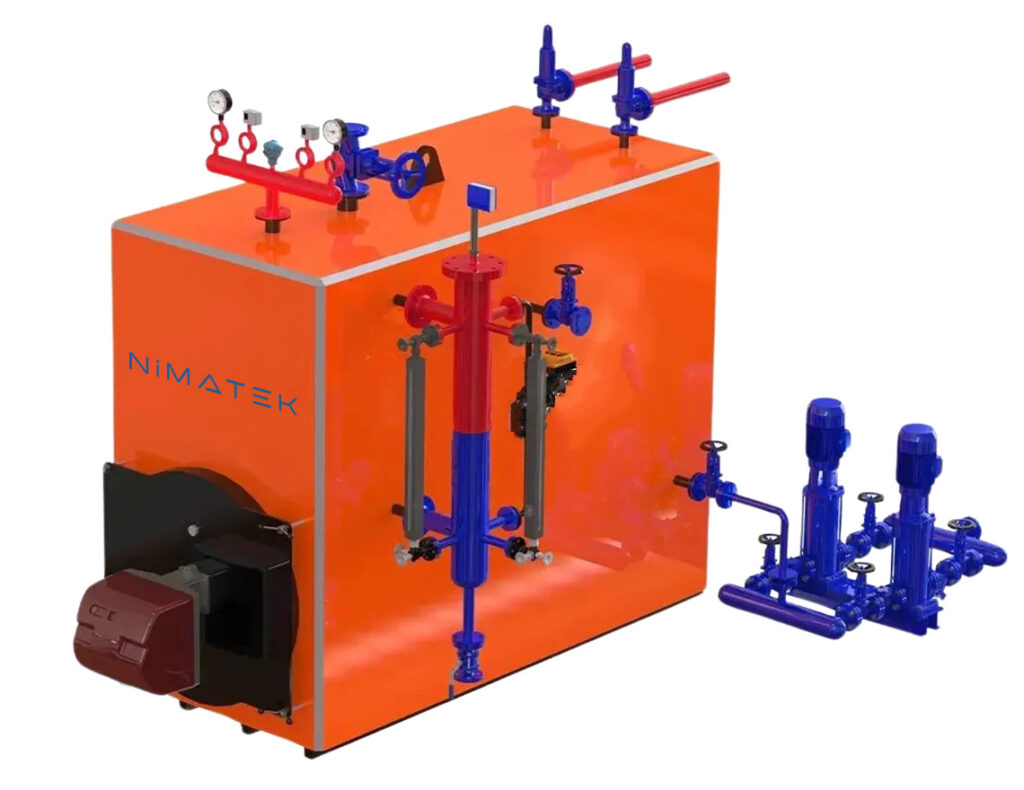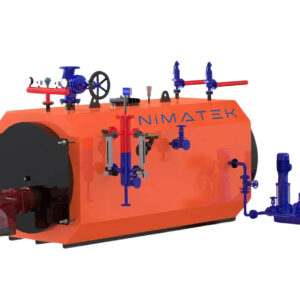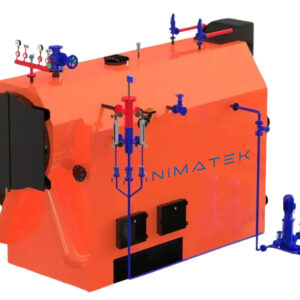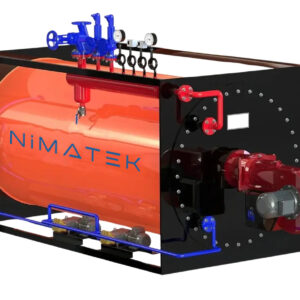Steam Production Capacity
400 kg/h – 16.000 kg/h
Operating Pressure
3 – 16 Bar
Design Type
Fire – Smoke Tube, 3 Pass
Fuel Type
Liquefied Natural Gas, Propane, Compressed Natural Gas, Natural Gas, Liquefied Petroleum Gas, Biogas, Diesel Fuel, Diesel Fuel, Fuel Oil.
Heat Capacity
250.000 Kcal/h – 10.000.000 Kcal/h
Nimatek Technologies employs 5 types of safety systems in the Shield Series liquid-gas fueled steam boiler:
- Steam Temperature
- Mechanical Pressure
- Digital Pressure
- Safety Valve
- Flue Gas Temperature Controls
All safety systems, including boiler feed pumps, are duplicated as standard packages for added security. If desired, a PLC control system can be added to enhance control capabilities. Explore our optional features for more customization.
Control your power with Ekotek technology.
Optional features such as PLC touchscreen control and Modbus RTU (Remote Terminal Unit) put the entire system under your control.
The Shield Series boilers are designed to operate quietly, eliminating noise pollution. Their stylish appearance ensures they fit seamlessly into any environment. Additionally, they offer easy installation and maintenance.
Upon request, our steam boilers can be delivered as a complete package with all accessories.
Liquid – Gas Fired Steam Boiler Working Principle
The working principle of liquid – gas fired steam boilers is based on heating water to generate steam through the combustion of fuel. The fundamental working principle of liquid – gas fired steam boilers can be outlined as follows:
-
Fuel Feeding: A suitable type of fuel (liquid or gas) is fed into the steam boiler. Liquid fuels, commonly fuel oil, and gas fuels like natural gas or LPG are used.
-
Combustion Chamber: The fuel is burned in a combustion chamber where the combustion process is controlled, and hot gases are produced.
-
Heating Surfaces: The resulting hot gases are directed to heat transfer surfaces. These surfaces can consist of pipes or plates through which water flows. Heat transfer surfaces heat the water in the boiler, facilitating energy transfer.
-
Transfer of Heat to Water: The hot gases come into contact with the water surrounding the heating surfaces, causing the water’s temperature to increase.
-
Vaporization: The heated water begins to vaporize. As the water’s temperature reaches its boiling point, it starts transitioning to steam.
-
Steam Formation: Water molecules that vaporize separate from the water surface, forming steam that gathers above the water level.
-
Steam Collection: The produced steam collects in a collection chamber at the top of the boiler. It is then taken out from there and can be used for energy transfer.
-
Steam Usage: The generated steam is directed towards systems requiring energy transfer. These systems often involve steam turbines or heating systems.
-
Exhaust of Flue Gases: At the end of the process, the flue gases resulting from combustion are expelled to the outside through chimney stacks or exhaust systems.
The working principle of liquid – gas fired steam boilers shares similarities with the basic principle of steam boilers. However, due to the use of different fuel types, the combustion process and stages of heat transfer can vary based on the characteristics of the fuel.





